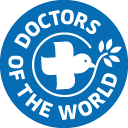On March 28 this year, a violent 7.7 earthquake struck Myanmar, killing more than 3,600 people and injuring thousands more. The natural disaster came at a time where Myanmar was already struggling with a humanitarian crisis due to a protracted civil war caused by a military coup in 2021.
Doctors of the World has been in the country responding to the needs of marginalized communities since 2000, and was able to adjust its program to provide immediate assistance to the survivors of the earthquake.
Our teams conducted an assessment mission to identify the needs of those affected and launched an emergency response in the municipalities of Pyi Gui Ta Gon, Patheingyi, Tada-U and Amarapura.
A Snapshot of Our Emergency Response
Doctors of the World deployed mobile clinics comprising two operational teams, which conducted 4,000 consultations. 2,800 earthquake victims received essential medical care, psychosocial support, medication, and health information. 180 people who needed other care were referred to other services. The mobile clinics provided support to people living in remote or heavily affected areas.
In addition, our teams also provided essential medical supplies to 12 healthcare facilities impacted by the earthquake, enabling them to continue providing healthcare in the most affected areas and bolstering the health system. We further provided 300 dignity kits to around ten medical facilities and civil society organizations to ensure that the bodies of the deceased are treated with respect and dignity.
Doctors of the World also supported the rehabilitation of four private hospitals in three municipalities badly affected by the earthquake (repair work on roofs, floors, ceilings, etc.).
Finally, our organization provided essential medicines to two local organizations : Phaung Daw Oo and Brahmaso, which distributed them to clinics where they were working. Doctors of the World also trained medical staff in infection prevention and control, psychological first aid, and skills development.
Intervention in a Flooded Area
“We faced many challenges. Following the rainy season, and due to the poor quality of water drainage infrastructure, many areas were flooded, making it particularly difficult for mobile clinics to travel. We also saw the huge gap between the considerable needs of the disaster victims and our limited resources to help them,” says Dr. Zaw, who is responsible for coordinating Doctors of the World’s mobile clinics.
Today, three months after the disaster, the victims still need help.
Disasters like earthquakes may strike in mere minutes, but their impact can linger for years—shattering homes, crippling vital infrastructure, and straining fragile healthcare systems. These conditions often become a breeding ground for communicable diseases and long-term suffering. At Doctors of the World, we go beyond emergency response. We remain on the ground, partnering with local communities to rebuild stronger, more resilient systems. Our mission is not just to restore what was lost, but to help create a future where communities are better prepared to face whatever comes next.




